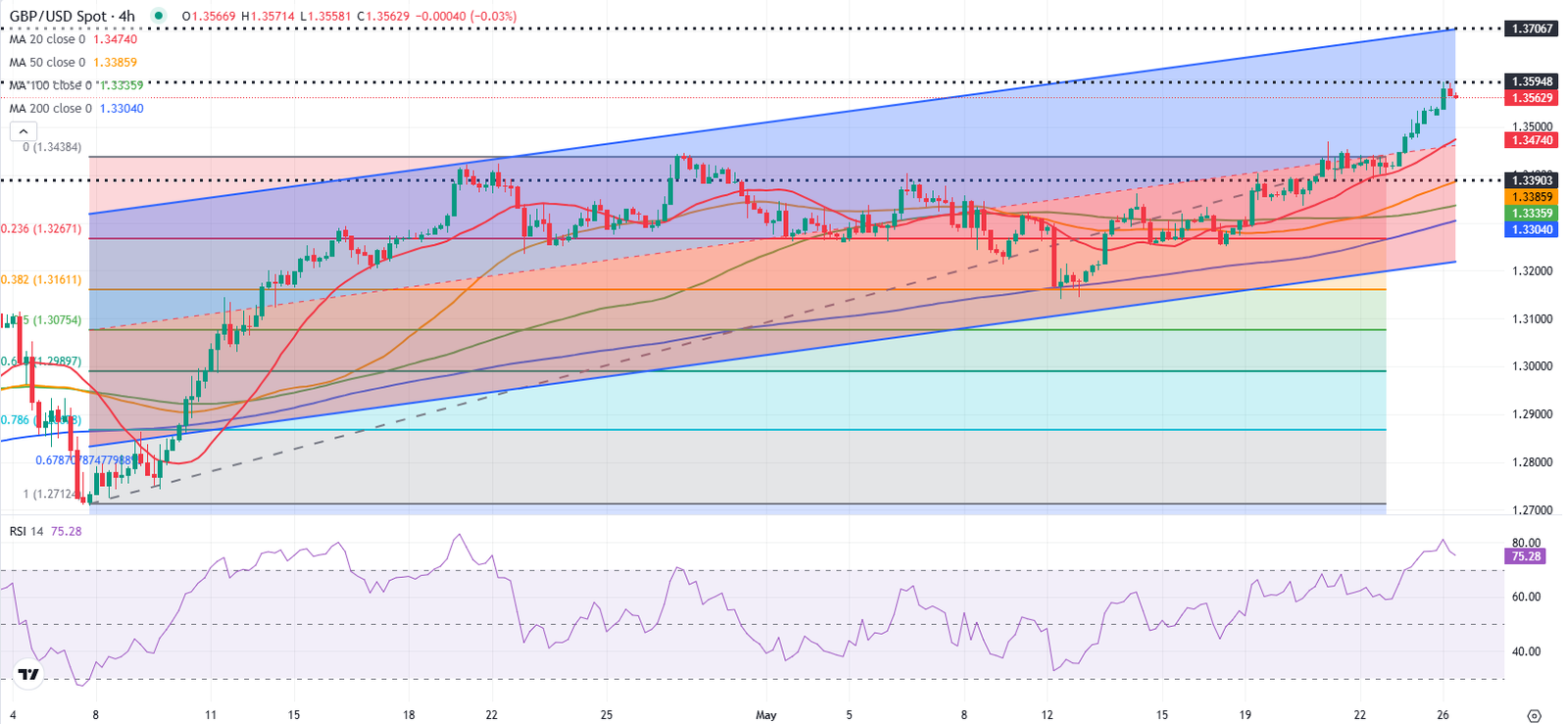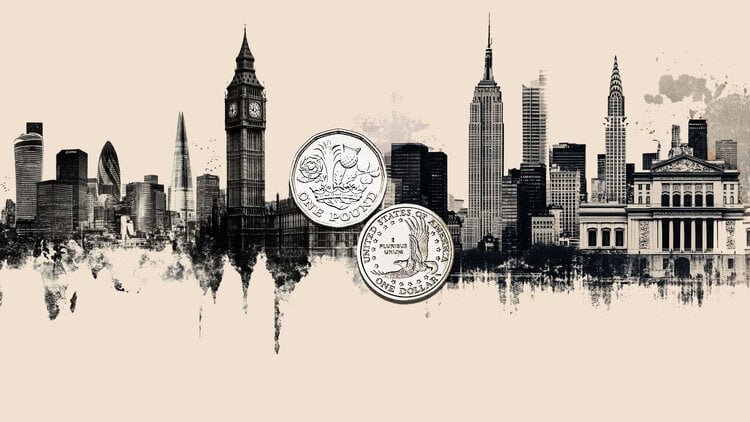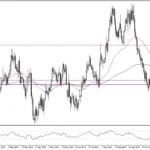- GBP/USD retreats slightly after setting a new multi-year high.
- The technical outlook suggests that the pair remains overbought in the near term.
- Trading volumes could remain thin in the second half of the day.
GBP/USD started the week on a bullish note and touched its highest level since February 2022 near 1.3600. The pair corrects lower in the European session and the technical outlook suggests that it remains overbought in the near term.
British Pound PRICE Last 7 days
The table below shows the percentage change of British Pound (GBP) against listed major currencies last 7 days. British Pound was the strongest against the US Dollar.
| USD | EUR | GBP | JPY | CAD | AUD | NZD | CHF | |
|---|---|---|---|---|---|---|---|---|
| USD | -1.71% | -2.04% | -1.59% | -1.84% | -1.55% | -2.15% | -1.75% | |
| EUR | 1.71% | -0.35% | 0.18% | -0.07% | 0.29% | -0.38% | -0.03% | |
| GBP | 2.04% | 0.35% | 0.23% | 0.28% | 0.64% | -0.03% | 0.32% | |
| JPY | 1.59% | -0.18% | -0.23% | -0.26% | 0.20% | -0.37% | -0.11% | |
| CAD | 1.84% | 0.07% | -0.28% | 0.26% | 0.31% | -0.31% | 0.04% | |
| AUD | 1.55% | -0.29% | -0.64% | -0.20% | -0.31% | -0.67% | -0.31% | |
| NZD | 2.15% | 0.38% | 0.03% | 0.37% | 0.31% | 0.67% | 0.35% | |
| CHF | 1.75% | 0.03% | -0.32% | 0.11% | -0.04% | 0.31% | -0.35% |
The heat map shows percentage changes of major currencies against each other. The base currency is picked from the left column, while the quote currency is picked from the top row. For example, if you pick the British Pound from the left column and move along the horizontal line to the US Dollar, the percentage change displayed in the box will represent GBP (base)/USD (quote).
The US Dollar (USD) came under strong selling pressure on Friday and fuelled a decisive rally in GBP/USD heading into the weekend as United States (US) President Donald Trump threatened the European Union (EU) with 50% tariffs, noting that their discussions were going nowhere.
Early Monday, the risk mood improves slightly after President Trump announced on Sunday that he agreed to an extension on the 50% tariff deadline European imports until July 9 after a phone call with Commission President Ursula von der Leyen.
Nevertheless, investors could refrain from positioning themselves for a steady recovery in the USD, given the growing uncertainty about the US government’s fiscal situation. Over the weekend, US Senator Ron Johnson told CNN that he thinks they have enough votes to stop Trump’s tax bill until he gets serious about spending reduction and reducing the deficit.
The economic calendar will not feature any high-tier data releases on Monday. The trading action is likely to remain subdued in the second half of the day, with financial markets in the US remaining closed in observance of the Memorial Day holiday.
GBP/USD Technical Analysis

The Relative Strength Index (RSI) indicator on the 4-hour chart stays well above 70, suggesting that GBP/USD remains technically overbought. The pair could face next support at 1.3500 (static level, round level) before 1.3470 (mid-point of the ascending channel) and 1.3400 (static level, round level).
On the upside, interim resistance seems to have formed at 1.3600 (static level) before 1.3700 (upper limit of the ascending channel).
Pound Sterling FAQs
The Pound Sterling (GBP) is the oldest currency in the world (886 AD) and the official currency of the United Kingdom. It is the fourth most traded unit for foreign exchange (FX) in the world, accounting for 12% of all transactions, averaging $630 billion a day, according to 2022 data.
Its key trading pairs are GBP/USD, also known as ‘Cable’, which accounts for 11% of FX, GBP/JPY, or the ‘Dragon’ as it is known by traders (3%), and EUR/GBP (2%). The Pound Sterling is issued by the Bank of England (BoE).
The single most important factor influencing the value of the Pound Sterling is monetary policy decided by the Bank of England. The BoE bases its decisions on whether it has achieved its primary goal of “price stability” – a steady inflation rate of around 2%. Its primary tool for achieving this is the adjustment of interest rates.
When inflation is too high, the BoE will try to rein it in by raising interest rates, making it more expensive for people and businesses to access credit. This is generally positive for GBP, as higher interest rates make the UK a more attractive place for global investors to park their money.
When inflation falls too low it is a sign economic growth is slowing. In this scenario, the BoE will consider lowering interest rates to cheapen credit so businesses will borrow more to invest in growth-generating projects.
Data releases gauge the health of the economy and can impact the value of the Pound Sterling. Indicators such as GDP, Manufacturing and Services PMIs, and employment can all influence the direction of the GBP.
A strong economy is good for Sterling. Not only does it attract more foreign investment but it may encourage the BoE to put up interest rates, which will directly strengthen GBP. Otherwise, if economic data is weak, the Pound Sterling is likely to fall.
Another significant data release for the Pound Sterling is the Trade Balance. This indicator measures the difference between what a country earns from its exports and what it spends on imports over a given period.
If a country produces highly sought-after exports, its currency will benefit purely from the extra demand created from foreign buyers seeking to purchase these goods. Therefore, a positive net Trade Balance strengthens a currency and vice versa for a negative balance.




















